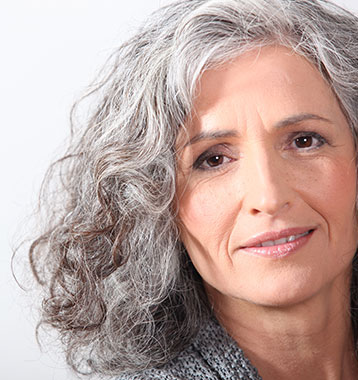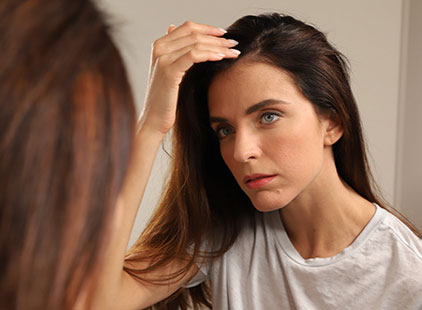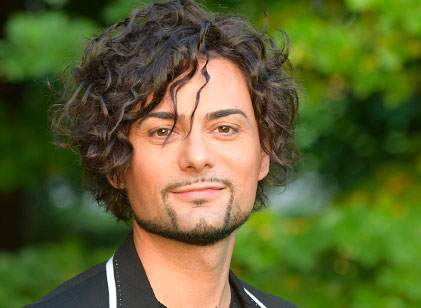Only when the greying process starts around 20/25 years can we talk about premature greying, or when, though starting at the right age, it progresses very quickly.
Many people who suffer from hair loss following a major psychological shock, will grow back white hair. Stress and physical debilitation lead to hair problems such as weakening and decreased resistance. Some illnesses, including vitamin B12 deficiency anemia and some thyroid disturbances, induce greying in young patients.
The production of melanin pigments that give color to the hair cortex occurs inside hair follicles during the anagen phase. During this phase pigment granules produced by melanocytes are released into the epidermal cells of the bulb. Eumelanin is responsible for the spectrum of darker colors that go from light brown to dark black, while pheomelanin gives birth to the lighter shades that go from light blonde to dark red. In darker colored hair, the melanin granules are large and compact, while in lighter colored hair they are smaller and less compact. The ability of humans to produce pigments diminishes with age. Men and women usually arrive at having grey hair around 50 years of age.
Complete whitening is caused by the end of melanocyte activity in hair follicles. In the majority of people, in the beginning, the “grey” effect is noticed on the scalp characterized by the presence of pigmented hair alternating with depigmented hair.
White hair is the final result of the end of melanin synthesis, accompanied by a correspondent depigmentation of hair, which becomes white. In the majority of individuals, the causes that lead to the whitening of hair are natural, physiological and genetic. For this reason, no cures exist that can bring back the lost color to white hair. A series of remedies and tricks exist that help prevent premature greying and attenuate the onset of white hair.
Smoking, alcohol and many pharmaceutical drugs facilitate the development of free radicals that attack and destroy all cells of the organism, including melanocytes.
A balanced, varied diet low in saturated fat helps hair remain healthy, strong and shiny, prevents it from falling out and delays or reduces the whitening process. A diet rich in protein, vitamins and minerals is fundamental for hair health. In particular, cystine and lysine, two essential amino-acids (called essential as our organism is unable to autonomously synthesize and produce them) that make up keratin, depend completely on diet and are therefore supplied through the food we ingest. A sufficient quantity of meat, fish or liver is important not only for reinforcing hair and facilitating its regrowth, but also for maintaining the activity of melanocytes that produce colored pigments.
Among the most important vitamins for hair are: Vitamin A (egg yolks, oily fish, leafy green vegetables and liver) which reinforces hair and the scalp and protects them from free radicals, guaranteeing proper health, Vitamin E (vegetable oils and whole grains) which contrasts and combats free radicals, Vitamin B2 (eggs, milk products, broccoli and beans) which favors sebum secretion and cellular exchange, Vitamin B4 (mean, grains, potatoes, egg yolks and tomatoes) which improves hair follicle activity and lastly Vitamin B5 (eggs, peanuts, mushrooms, liver and broccoli) which contributes to the strength of the hair shaft and accelerates hair growth.
The following minerals are equally important: Iron (red meat, spinach and fruit), useful for supplying oxygen to the skin and scalp and for the production of pigments that block the insurgence of grey hair, Copper (spinach, crustaceans and potatoes) which collaborates in the synthesis of the melanin that gives color to hair and prevents the insurgence of white hair, Magnesium (vegetables and peanuts) which facilitates the development of enzymes that act both in the production of melanin and hair regrowth, Zinc (meat and fish) which helps the activity of the germinal cells of the matrix and aids hair growth and, lastly, Sulphur (white meat, liver and ham) which contrasts and improves thin and brittle hair.
An incorrect diet reduces the diameter of hair bulbs and their regenerative capacity, in addition to facilitating and favoring the insurgence and growth of grey hair and the whitening process. In conclusion, a proper diet helps us to have healthy, full and colored hair.

 Italiano
Italiano  Português
Português  Français
Français  Español
Español 



